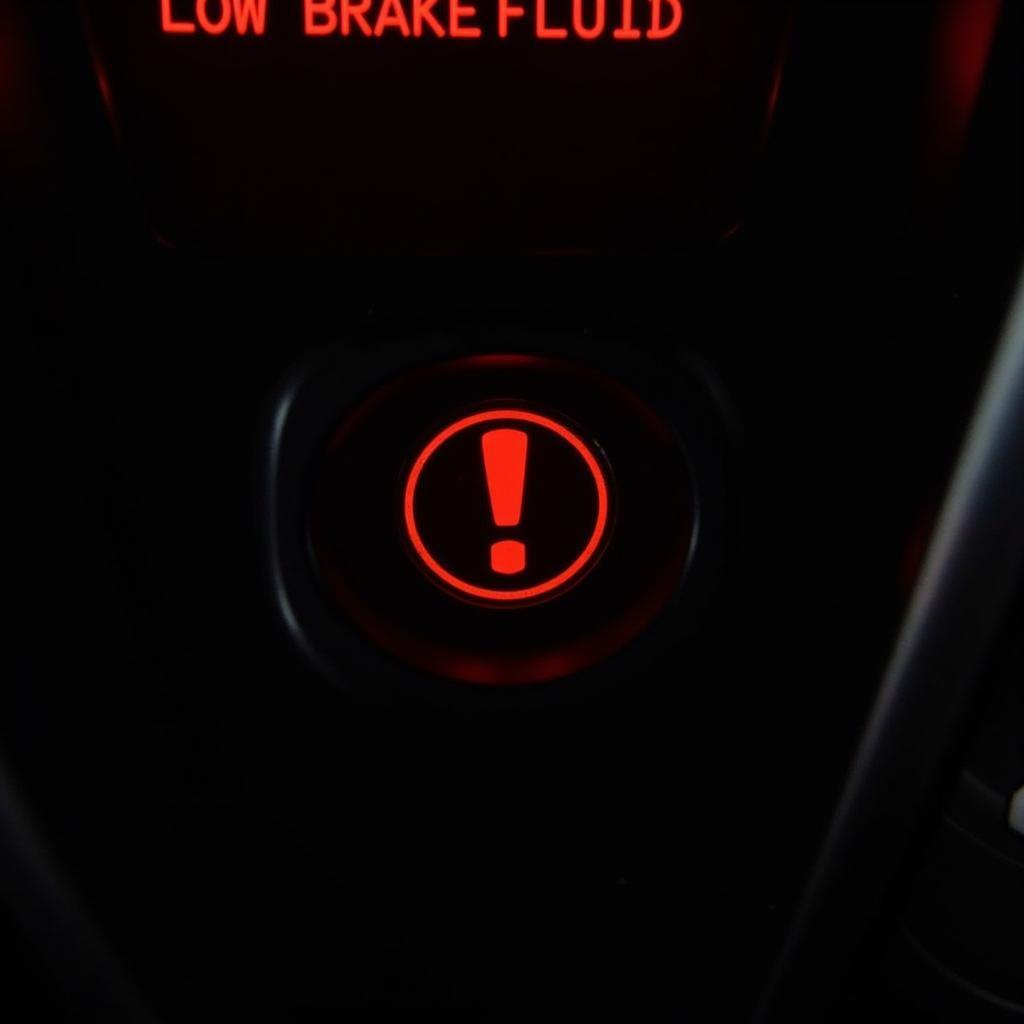A battery warning light on your car’s dashboard can be alarming. It signals a potential problem with your vehicle’s electrical system, and understanding what triggers it is crucial for a quick resolution. This article provides a comprehensive guide to diagnosing and addressing car battery warning lights, covering everything from simple checks to more complex solutions.
One common cause of a battery warning light is a loose or corroded battery cable. Check your battery terminals for any signs of corrosion or loose connections. If you find any, cleaning the terminals and tightening the connections might solve the problem. You can clean the terminals with a mixture of baking soda and water. Always disconnect the negative cable first when working on your car battery. If you recently changed your battery and are now experiencing issues, you can find helpful information at all warning lights on in car after changing battery.
Decoding Your Car’s Battery Warning Light
The battery warning light isn’t just a simple on/off indicator. In some vehicles, it can provide subtle clues about the underlying issue. For example, a dimly lit warning light might indicate a weak battery, while a bright, flashing light could suggest a more serious problem with the charging system.
What Causes a Battery Warning Light to Come On?
A variety of issues can trigger the battery warning light. Besides loose or corroded battery cables, a failing alternator is a frequent culprit. The alternator is responsible for recharging the battery while the engine is running. If it malfunctions, the battery won’t receive the necessary charge, leading to the warning light illuminating. If your car battery just died no warning, you might want to check the alternator as a possible cause.
Troubleshooting Your Car Battery Warning
If a simple cleaning and tightening of the battery terminals doesn’t resolve the issue, you’ll need to perform some further troubleshooting. A multimeter can be a valuable tool in this process, allowing you to measure the battery voltage and the alternator’s output. A low battery voltage indicates a weak or dying battery, while a low alternator output confirms a faulty alternator. You might encounter similar problems if your car battery dead without warning.
Can I Drive with the Battery Light On?
While it’s possible to drive a short distance with the battery light on, it’s not recommended. Continuing to drive with a faulty charging system will eventually drain the battery completely, leaving you stranded. If you notice the battery light come on, it’s best to address the issue as soon as possible. For certain car models, specific battery problems are more prevalent, as seen with the 2012 gmc terrain battery problems.
Remote Diagnostics and Software Solutions
Modern vehicles often require specialized diagnostic tools and software to pinpoint and resolve complex electrical issues. Remote diagnostics and software solutions are increasingly popular, allowing technicians to access your vehicle’s systems remotely and perform necessary programming or installations to fix the problem. These advancements are particularly helpful for addressing issues related to the battery light abs light airbag light simultaneously appearing on the dashboard.
“Remote diagnostics are transforming the automotive repair industry,” says John Smith, Lead Automotive Electrical Engineer at CarDiagTech. “They allow us to quickly diagnose and resolve issues, often without the need for a physical visit to the repair shop.”
Preventing Future Battery Issues
Regular battery maintenance can significantly extend its lifespan and prevent future problems. This includes periodic cleaning of the terminals, checking the battery’s state of charge, and ensuring the charging system is functioning correctly.
“Preventive maintenance is key to avoiding unexpected battery failures,” advises Jane Doe, Senior Automotive Technician at AutoTech Solutions. “A simple check-up can save you time, money, and frustration down the road.”
Conclusion
A battery warning in car is a signal that shouldn’t be ignored. Understanding the potential causes and taking prompt action can prevent further complications and ensure your vehicle’s electrical system operates smoothly. By following the tips and guidance in this article, you can effectively troubleshoot and resolve battery warning light issues, or seek professional help when necessary.
FAQ
-
What does a flashing battery light mean? A flashing battery light could indicate a serious charging system problem.
-
How long can I drive with the battery light on? It’s not recommended to drive any significant distance with the battery light illuminated.
-
Can a bad alternator cause the battery light to come on? Yes, a failing alternator is a common cause of the battery warning light.
-
How often should I check my car battery? It’s recommended to check your car battery at least twice a year.
-
Can I replace my car battery myself? Yes, but it’s essential to follow proper safety procedures.
-
What is remote diagnostics? Remote diagnostics allows technicians to access and analyze your vehicle’s systems remotely.
-
How can I prevent future battery issues? Regular maintenance, including cleaning terminals and checking the charging system, can prevent future battery problems.



